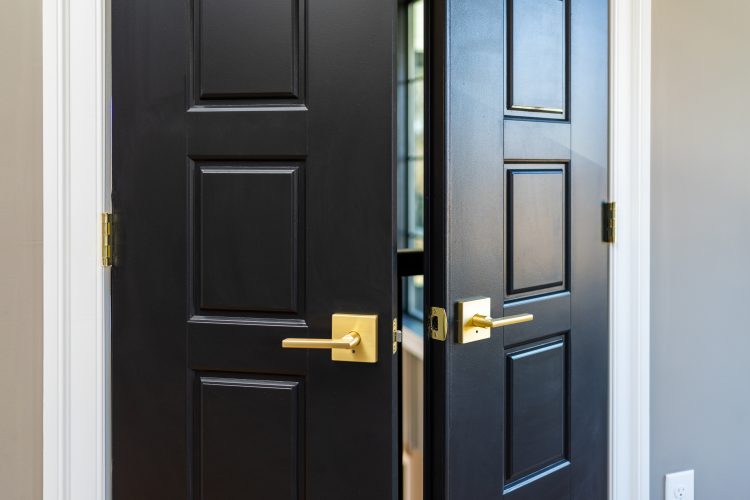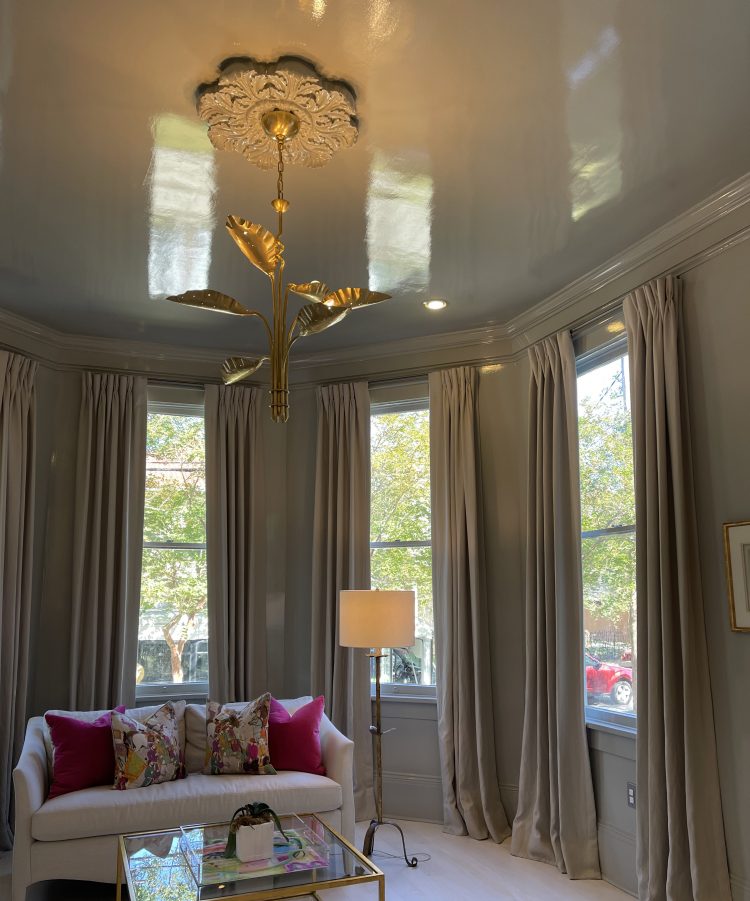Let’s talk about paint sheen.
Sheen refers to the “glossiness” of the paint’s finish. The sheen affects aesthetics, how durable the finish is, and how you will need to touch up or clean it. Each sheen has its own purpose, and there are positives and negatives to any selection.
Though some brands and industries use different or additional names, the most commonly available paint sheens are flat, eggshell, satin, semi-gloss, and gloss (or high gloss).


Flat is just that, paint with a lot of pigment that doesn’t directly reflect light. There is no sheen or noticeable shine, but it provides rich color and a velvety smooth finish that hides imperfections rather than highlighting them.
The main benefit of flat paint is that it can be touched up without “flashing”- an ugly consequence of attempting to touch up higher-sheen paint finishes where you can see a different reflection of light in the touched-up area. Sure, the color is the same, but you’ll notice spots on the wall that appear more or less reflective than the surrounding area. For this reason, when touching up a wall or area with paint other than flat, it’s best to repaint the whole wall.
The downside of a flat finish is that it is more likely to get marred in the first place, and it can be more difficult to clean without taking some of the paint off along with the offending mark. It is the most economical paint finish to buy, and the least labor-intensive due to its forgiving nature and ease of touch-up.
Eggshell is so named because it is an almost flat finish with just the tiniest hint of luster, like an egg’s shell. It covers imperfections well and bounces just a bit of light, giving walls a soft and glowy appearance.
Eggshell can flash when touched up, but it can also take a bit more scrubbing than a flat finish and may not need to be touched up as often.

Satin is another step up and moves into the “noticeably glossy” territory. This paint starts to highlight some imperfections in the wall and in the application; so it’s important to be mindful of brushstrokes and overlapping roller marks. This can be a nice paint to use in damp areas such as bathrooms, or in kid’s rooms where sticky fingers and the occasional crayon may interact with walls. It can also be used as a slightly less glossy trim finish. Satin can typically handle some scrubbing without damaging the paint, but once a touch-up is necessary you will need to paint the entire wall rather than fixing small areas.
Semi-Gloss is shiny. It is best relegated to trim, doors, wainscot, painted cabinet fronts, and other items that take a beating, need to be cleaned often or are protecting other surfaces. It shows any imperfections of the underlying surface, and proper application is paramount. It bounces a significant amount of light and is easy to wipe down.

Gloss or High Gloss is a glass-like finish that is typically reserved for high-end statement applications. Whether applied to cabinet doors for some high-drama shine, or to an entire room for Hollywood glam, it should be very carefully considered and expertly applied. Every brush stroke or misstep will be highlighted, and each coat magnifies any mistakes in the layers underneath. This finish is best when left to the pros and handled carefully; though it is very durable when properly applied.